#Animal Microbiome
Explore tagged Tumblr posts
Text
Boost Your Pet’s Health with Natural Probiotics
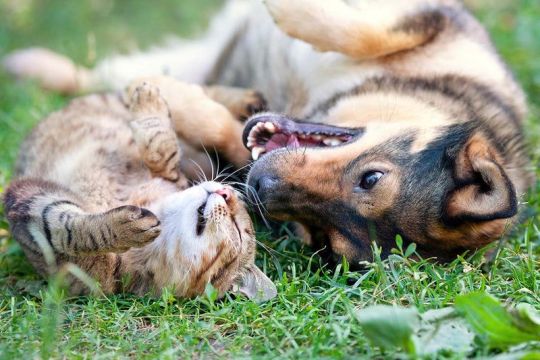
Microbz offers a selection of 100% natural, chemical-free probiotics tailored for pets like dogs, cats, chickens, and horses. These products support gut health, bolster the immune system, and promote overall wellness. Easy to mix with food, they’re safe, vegan, and sustainably packaged. Plus, their Healthy Habitats spray helps maintain a cleaner environment for your pets.
#Pet Health#Natural Probiotics#Gut Wellness#Immune Support#Sustainable Pet Care#Chemical-Free#Animal Microbiome
0 notes
Text
killing time at the library and grabbed a copy of Turtles All The Way Down to read (i was gonna do stuff on the computer but their internet is down). i was pretty cool on John green's writing for a while but I like him so much as a person I wanted to try reading it, especially since I've heard lots of people (himself included) say it's a much more personal work that reflects a lot more of his own struggles with OCD
and im gonna be honest. either aza needs to stop being so relatable or i gotta talk to a doctor
#anime life#finally someone else thinking constantly about their own microbiome with disgust and anxiety
2 notes
·
View notes
Text
Put an animal in a small cage with no stimulation. It won't thrive.
Put it in it's natural environment and see what happens. Nature isn't just a drug. It's something we need as much as we need water, food and love.
We're not separate. Of course we become sick without it.
Do you know what I love? How closely nature is linked with mentality. A walk in the woods can calm anxiety, sitting and dropping stones into a lake can ease anger, even taking time to pot some plants and look after them can keep my mind occupied from dissociation. It’s like the earth is the oldest psychiatrist of all, and it is always there to talk to, giving me a constant free prescription. Isn’t that beautiful
#honestly I feel bad for people who don't have the opportunity to spend time outside man-made environments#now they're inventing all kinds of forest-microbiome sprays as a desperate attempt to connect#what if all humans environments were designed to be hospitable to the human animal?#what would it look like?
86K notes
·
View notes
Text
Video: How to Cultivate a Healthy Gut Microbiome with Food
Food for gut health: Our gut flora is determined by what we eat, for good or for ill. An unhealthy intestinal biome is a major contributor to heart disease and other illnesses. — Michael Herschel Greger (b. 1972) is an American physician, author, and professional speaker on public health issues, best known for his advocacy of a whole-food, plant-based diet, and his opposition to animal-derived…
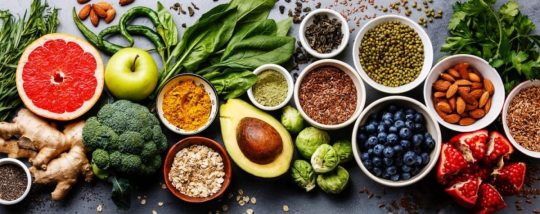
View On WordPress
#aging#Animal rights#Dr. Michael Greger#gut bacteria#How to Cultivate a Healthy Gut Microbiome with Food#Illness#intestinal biome#TMAO#vegan#Vegan Kitchen#vegetarian
1 note
·
View note
Photo

via Pandas are big 'social media' users
Pandas, long portrayed as solitary beasts, do hang with family and friends, and they’re big users of social media. Scent-marking trees serve as a panda version of Facebook.
1 note
·
View note
Text
Sponge Fact
Sponges can survive without oxygen for surprisingly long periods of time! Sponge gemmules (babies, pictured below) can live for months in anoxic (no oxygen) conditions. This apparently has no detrimental effects on their later growth! Also, adult sponges are capable of reducing their pumping rates to conserve oxygen in hypoxic (low oxygen) conditions.

Shifts in oxygen levels also lead to shifts in sponge microbiomes, with an increase in anaerobic (metabolize without oxygen) microbes during hypoxic periods. It’s still unknown if these microbes help contribute to sponge survival in these conditions (via nutrient exchange, etc.), but it’s an exciting idea to consider!
0 notes
Photo
Update: we are currently at 18% of our goal! Thank you to everyone who has donated, liked, and reblogged this post. We still have 30 days to crowd fund.
Please consider sharing or donating. Every dollar counts, and your card WILL NOT be charged unless we reach 100% of the goal. Thank you! Here are some more cute photos of crabs







Thank you 💕🐚🦀


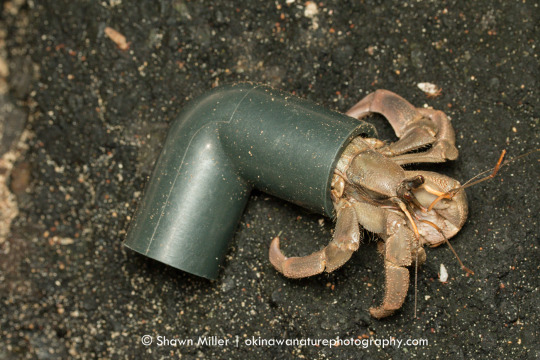
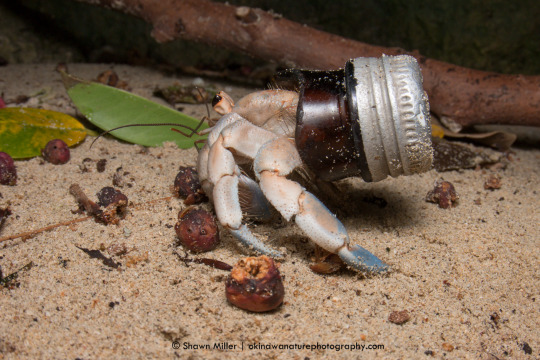

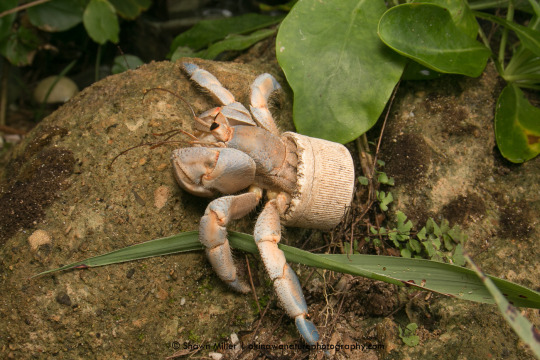

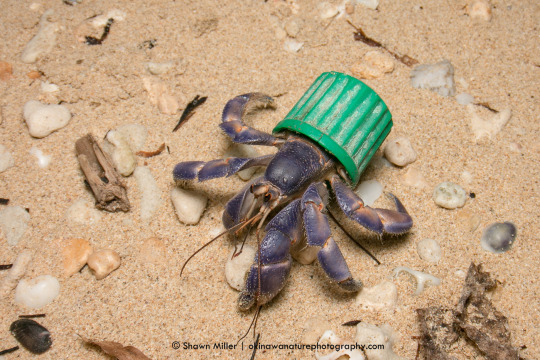
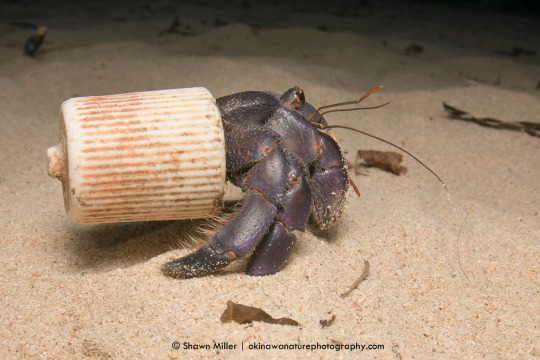
(May 12, 2023) We are raising money for a crowd funded research project investigating the cause of blueberry hermit crabs in Okinawa, Japan using trash found on the beach as “homes” instead of natural shells. These hermit crabs are endemic to the southern islands of Japan, and they act as coastal environmental engineers. They are endangered on several islands, and we want to try and understand why they are resorting to beach trash for shells. Please consider sharing this post and donating to the project. The fundraising will be active for the next 45 days (until June 26).
You can find all project details here: https://experiment.com/projects/blueberry-hermit-crabs-with-beach-trash-homes
We suspect that areas with high rates of tourism lead to beach combers collecting natural shells leaving nothing for the hermit crabs to use. It’s possible that overfishing of turbo snails which would naturally provide shells for the crabs may also be a factor. We will survey many sites across several islands in Okinawa to try and determine a cause of this behavior.
We will be working closely with national geographic photographer Shawn Miller (photo credits above) and several researchers in Japan. Additionally, we will complete extensive beach clean ups in the areas we study. Thank you so much for reading!
#conservation#hermit crabs#ecology#biology#research#beach combers#plastic waste#save our shells#make the switch for nature#national geographic#crab#crab rave#hermies#shells#micro plastics#plastics#microbiome#microbiota#marine science#marine biology#university of Essex#coral reef#coral#aquarium#aquascape#cute animals#cute baby animals#ocean#Dive aware
7K notes
·
View notes
Text
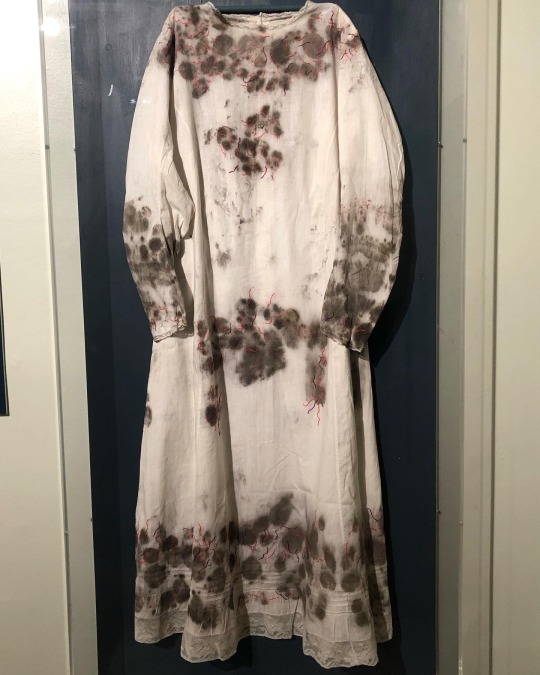
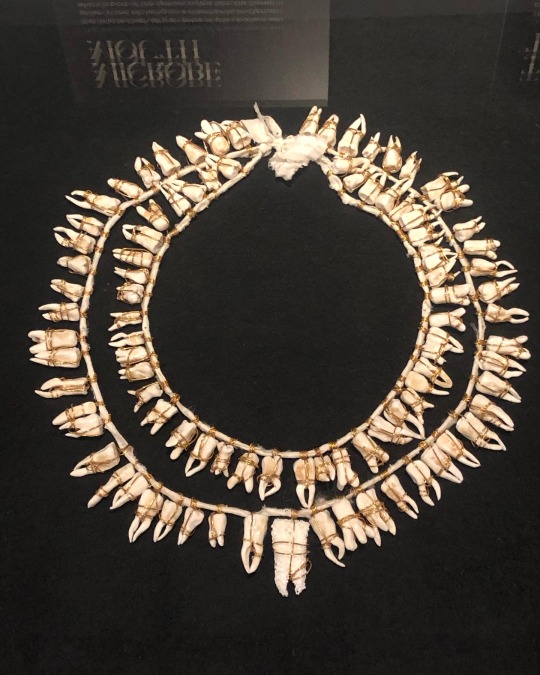
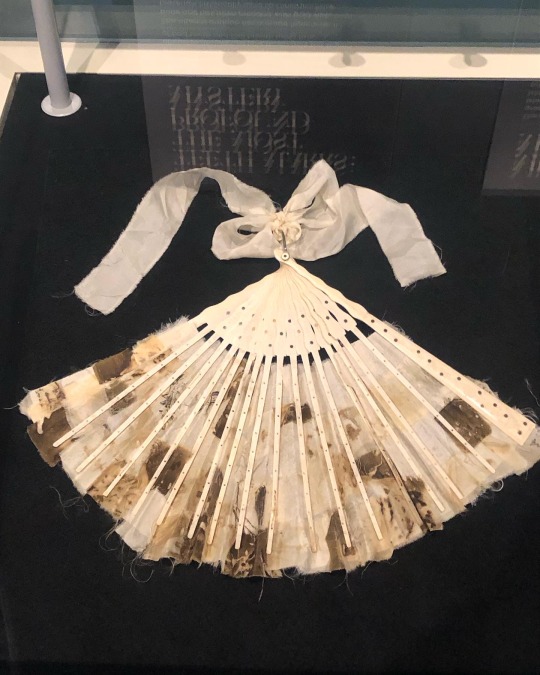
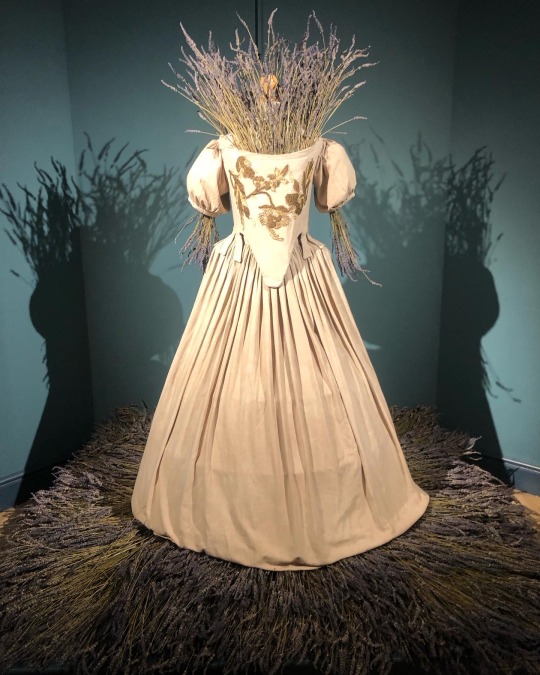
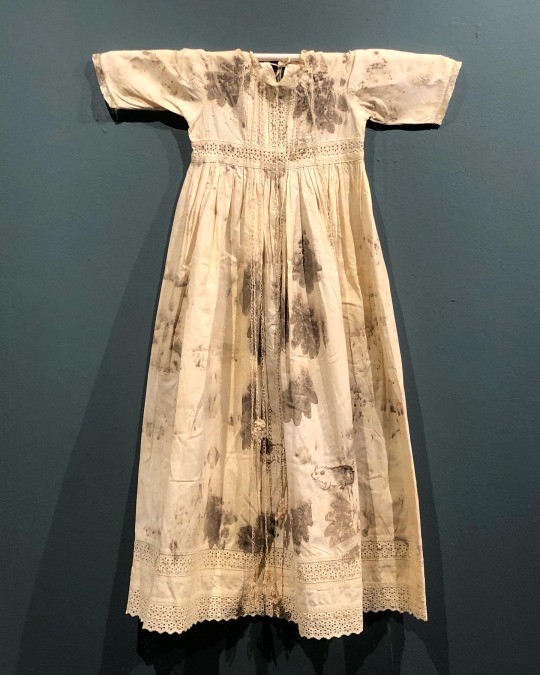
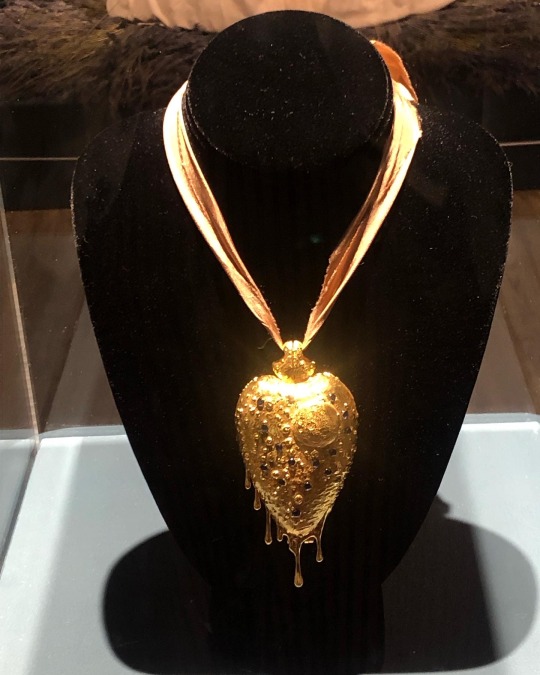
‘Fragile Microbiomes’ by bio-artist Anna Dumitriu
1. SYPHILIS DRESS- This dress is embroidered with images of the corkscrew-shaped bacterium which causes the sexually transmitted disease syphilis. These embroideries are impregnated with the sterilised DNA of the Nichols strain of the bacterium - Treponema pallidum subsp. pallidum - which Dumitriu extracted with her collaborators.
2. MICROBE MOUTH- The tooth at the centre of this necklace was grown in the lab using an extremophile bacterium which is part of the species called Serratia (Serratia N14) that can produce hydroxyapatite, the same substance that tooth enamel is made from.
The handmade porcelain teeth that make up this necklace have been coated with glazes derived from various bacterial species that live in our mouths and cause tooth decay and gum disease, including Porphyromonas gingivalis, which can introduce an iron-containing light brown stain to the glaze.
3. TEETH MARKS: THE MOST PROFOUND MYSTERY- In his 1845 essay “On Artificial Teeth”, W.H. Mortimer described false teeth as “the most profound mystery” because they were never discussed. Instead, people would hide the stigma of bad teeth and foul breath using fans.
This altered antique fan is made from animal bone and has been mended with gold wire, both materials historically used to construct false teeth (which would also sometimes incorporate human teeth). The silk of the fan and ribbon has been grown and patterned with two species of oral pathogens: Prevotella intermedia and Porphyromonas gingivalis. These bacteria cause gum disease and bad breath, and the latter has also recently been linked to Alzheimer’s disease.
4. PLAGUE DRESS- This 1665-style 'Plague Dress' is made from raw silk, hand-dyed with walnut husks in reference to the famous herbalist of the era Nicholas Culpeper, who recommended walnuts as a treatment for plague. It has been appliquéd with original 17th-century embroideries, impregnated with the DNA of Yersinia pestis bacteria (plague). The artist extracted this from killed bacteria in the laboratory of the National Collection of Type Cultures at the UK Health Security Agency.
The dress is stuffed and surrounded by lavender, which people carried during the Great Plague of London to cover the stench of infection and to prevent the disease, which was believed to be caused by 'bad air' or 'miasmas'. The silk of the dress references the Silk Road, a key vector for the spread of plague.
5. BACTERIAL BAPTISM- based on a vintage christening gown which has been altered by the artist to tell the story of research into how the microbiomes of babies develop, with a focus on the bacterium Clostridioides difficile, originally discovered by Hall and O’Toole in 1935 and presented in their paper “Intestinal flora in new-born infants”. It was named Bacillus difficilis because it was difficult to grow, and in the 1970s it was recognised as causing conditions from mild antibiotic-associated diarrhoea to life-threatening intestinal inflammation. The embroidery silk is dyed using stains used in the study of the gut microbiome and the gown is decorated with hand-crocheted linen lace grown in lab with (sterilised) C. difficile biofilms. The piece also considers how new-borns become colonised by bacteria during birth in what has been described as ‘bacterial baptism’.
6. ZENEXTON- Around 1570, Swiss physician and alchemist Theophrastus Paracelsus coined the term ‘Zenexton’, meaning an amulet worn around the neck to protect from the plague. Until then, amulets had a more general purpose of warding off (unspecified) disease, rather like the difference today between ‘broad spectrum’ antibiotics and antibiotics informed by genomics approaches which target a specific organism.
Over the next century, several ideas were put forward as to what this amulet might contain: a paste made of powdered toads, sapphires that would turn black when they leeched the pestilence from the body, or menstrual blood. Bizarre improvements were later made: “of course, the toad should be finely powdered”; “the menstrual blood from a virgin”; “collected on a full moon”.
This very modern Zenexton has been 3D printed and offers the wearer something that genuinely protects: the recently developed vaccine against Yersinia pestis, the bacterium that causes plague.
#my favourite pieces from this exhibition that I visited last month at the Thackray medical museum in Leeds#absolutely fascinating reading about the process and meanings behind these works#mine#anna dumitriu#works
2K notes
·
View notes
Text

---
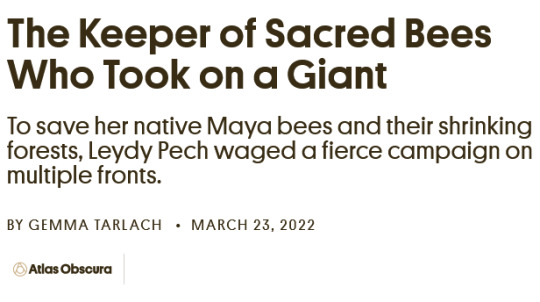


For the Maya, the honey bee is more than an insect. For millennia, the tiny, stingless species Melipona beecheii -- much smaller than Apis mellifera, the European honey bee -- has been revered in the Maya homeland in what is now Central America. Honey made by the animal the Maya call Xunan kab has long been used in a sacred drink, and as medicine to treat a whole host of ailments, from fevers to animal bites. The god of bees appears in relief on the walls of the imposing seacliff fortress of Tulum, the sprawling inland complex of Cobá, and at other ancient sites.
Today, in small, open-sided, thatched-roof structures deep in the tropical forests of Mexico’s Yucatán Peninsula, traditional beekeepers still tend to Xunan kab colonies. The bees emerge from narrow openings in their hollow log homes each morning to forage for pollen and nectar among the lush forest flowers and, increasingly, the cultivated crops beyond the forests’ shrinking borders. And that is where the sacred bee of the Maya gets into trouble.
---
In 2012, the Mexican government granted permission to Monsanto to plant genetically modified soybeans in Campeche and other states on the peninsula without first consulting local communities. The soybeans are engineered to withstand high doses of the controversial weedkiller Roundup; multiple studies have shown exposure to its main ingredient, glyphosate, negatively impacts bees, including by impairing behavior and changing the composition of the animals’ gut microbiome. Though soy is self-pollinating and doesn’t rely on insects, bees do visit the plants while foraging, collecting nectar and pollen as they go. Soon, Maya beekeepers found their bees disoriented and dying in high numbers. And Leydy Pech found her voice.
A traditional Maya beekeeper from the small Campeche city of Hopelchén, Pech had long advocated for sustainable agriculture and the integration of Indigenous knowledge into modern practice. But the new threat to her Xunan kab stirred her to action as never before. She led an assault on the Monsanto program on multiple fronts: legal, academic, and public outrage, including staging protests at ancient Maya sites. The crux of the legal argument by Pech and her allies was that the government had violated its own law by failing to consult with Indigenous communities before granting the permit to Monsanto. In 2015, Mexico’s Supreme Court unanimously agreed. Two years later, the government revoked the permit to plant the crops.
---
As Pech saw it, the fight was not simply about protecting the sacred bee. The campaign was to protect entire ecosystems, the communities that rely on them, and a way of life increasingly threatened by the rise of industrial agriculture, climate change, and deforestation.
“Bees depend on the plants in the forest to produce honey,” she told the public radio program Living on Earth in 2021. “So, less forest means less honey [...]. Struggles like these are long and generational. [...] ”
---
Headline, images, captions, and all text by: Gemma Tarlach. “The Keeper of Sacred Bees Who Took on a Giant.” Atlas Obscura. 23 March 2022. [The first image in this post was not included with Atlas Obscura’s article, but was added by me. Photo by The Goldman Environmental Prize, from “The Ladies of Honey: Protecting Bees and Preserving Tradition,” published online in May 2021. With caption added by me.]
4K notes
·
View notes
Text
Also preserved on our archive
By Jessica Wildfire
Our friends and family think they understand their immune system because George Carlin explained it to them in the 90s:
"Where did this sudden fear of germs come from? What do you think you have an immune system for? It's for killing germs. But it needs practice. It needs germs to practice on. If you kill all the germs around you, and lead a completely sterile life, then when germs do come along you're not going to be prepared. What are you gonna do? I'll tell you what, you're gonna get sick and you're gonna die and you're gonna deserve it because you're f-ing weak and you've got a f-ing weak immune system."
George Carlin was right about a lot of things, but he was wrong on this one.
(He got plastic wrong, too.)
Unfortunately, this part of his 11th HBO standup special became permanently lodged into the American cultural memory. I only saw it once as a kid, but it stayed with me for the rest of my life.
Not even AP Biology could dislodge it.
I, too, used to think you built your immune system up by exposing yourself to harmful germs. How could the great prophet George Carlin be mistaken on something that made so much intuitive sense, especially when you dropped a few f-bombs in there? I also thought it was a good thing to exercise your way through a cold. Then I opened myself up to the possibility that I was wrong.
In the words of Carl Sagan, I'd been bamboozled.
In early 2020, this Carlin bit inspired countless reaction videos that still litter the internet. Anti-science zealots have used George Carlin's monologue on disease thousands of times over the last four years to ridicule masks, vaccines, and clean air. Everywhere you look, that piece of standup looms in the background, and it's getting revived again for bird flu. But even George Carlin got the idea from somewhere else.
You can trace this misguided notion back to hygiene theory, proposed by David Strachan in 1989. Strachan argued that a whole range of health problems in the late 20th century had roots in "a lower incidence of infection in early childhood." Basically, our immune systems weren't getting enough exposure to bacteria and viruses. He was mainly talking about the rise in childhood allergies as the result, but the media began printing loose interpretations of his studies and jumping to conclusions that less exposure to disease was a bad thing in general. So the public developed the idea that somehow getting sick was good for you. So began the myth of the "bored immune system" that needed practice in order to stay healthy. Gurus and quacks latched onto this idea. So did talkshows.
And then comedians...
It wasn't until 2003 that Graham Rook offered a more accurate description of the situation. As he explained, "microbes have evolved into an essential role in regulating our immune system... the microbes involved are not infections, but friendly microbes which make up our human microbiome. These are acquired by exposure to other humans or animals and microbiota from our natural environment."
This became known as the "old friends hypothesis."
The old friends hypothesis now serves as the dominant model for how microbes work with our immune system. According to immunologists, kids need to be playing outside more and eating fresher, healthier foods. That's what helps their immune systems.
Getting sick all the time just hurts them.
Like many debunked ideas, hygiene theory and the myth of the bored immune system have become entrenched. A couple of years ago, hygiene theory got repackaged as "immunity debt." Now Americans, Canadians, and many Europeans think they need to get sick to stay healthy. The elites have absolutely no problem with that. It saves them countless billions to let everyone continue thinking they're better off letting diseases run around in their cells.
So:
Your immune system doesn't work like a muscle. It doesn't get stronger the more it's exposed to different harmful germs.
It doesn't need practice.
Phillipp Dettmer gives a vivid, accessible breakdown of the immune system in his 2021 book, Immune. You can show it to any internet troll who brags about their knowledge of the immune system. Dettmer destroys misinformation, explaining how your adaptive immune system actually works, as well as your gut microbiome.
As many articles and books explain, your body has an innate immune system that already knows how to fight off pathogens. You can help your immune system by feeding it the nutrients it needs. (That's an entirely different article.) You can protect your immune system from pollution, cigarette smoke, and other toxins. But genetics determines a lot of your immunological makeup. You can be born with an immune system that doesn't work the way it should, and it's not your fault.
You also have an adaptive immune system that stores chemical blueprints of pathogens in memory T and B cells. According to a 2024 article in Nature, these cells respond better to specific pathogens your body has seen before. Those blueprints last only as long as your memory cells. Sometimes those cells mature and stay around for years, even decades. If they don't, then your body won't remember the pathogen.
Your body doesn't need exposure to viruses.
Your immune system responds to harmful microbes and it can develop memories from previous infections. Most of the time, those memories apply specifically to that specific strain, variant, or clade of the virus. For example, immune memory to one type of adenovirus or rhinovirus doesn't confer automatic, guaranteed protection against all of them, and there are hundreds.
Sometimes, cross-protection can happen, but it's limited and hard to predict. When it does, like with the original smallpox vaccine, it's a big deal. If that were easy, we would already have a universal coronavirus vaccine and wouldn't have to update flu shots every year. Most of the time, getting sick with one virus doesn't train your body to respond any better to other viruses, especially when those viruses aren't related.
Victoria's state department of health puts it very plainly:
"The immune keeps a record of every microbe it has ever defeated, in types of white blood cells (B-lymphocytes and T-lymphocytes) known as memory cells. This means it can recognise and destroy the microbe quickly if it enters the body again, before it can multiply and make you feel sick. Some infections, like the flu and the common cold, have to be fought many times because so many different viruses or strains of the same type of virus can cause these illnesses. Catching a cold or flu from one virus does not give you immunity against the others."
You can add Covid to that list.
Some research has suggested that because catching one virus activates your innate immune system, your body's broad layers of defense offer brief protection against other pathogens. Viruses also compete with each other, meaning that infection from one virus can ward off others. That's called viral interference. Neither option means your immune system benefits from exposure to viruses.
We can't explain all of the human immune system in a single post, but here's the point. It's way more complicated than George Carlin explained. There's a lot more going on. It's not as simple as training your immune system by giving it practice.
That's not how it works.
It just sounds good.
No credible doctor or immunologist recommends building your immune system by welcoming viral and bacterial infections into your life. The costs far outweigh the benefits. Many viruses exact a price on your body and your immune system. Getting infected over and over again makes you weaker, not stronger. Vaccines don't work because they give your immune system practice. They work because they allow your body to develop a memory of a pathogen without all the risk.
Many viruses, like the flu, often leave lasting damage even when your immune system fights them off. Your immune system actually does some of that damage itself by attacking infected cells. In the wake of flu, your entire body including your immune system needs time to recover. During that stage, you're vulnerable to opportunistic infections. Other viruses, like measles and ebola, disable your immune system and even wipe out memory cells.
That's also what Covid does, among many other things.
You can't develop full immunity to viruses that evade, attack, and disable large parts of your immune system. Sometimes you can develop partial immunity, but the virus still invades and still does damage every time. Just because you can recover from these infections, that doesn't mean you're better off afterward.
Think of it like this:
Your body already knows how to heal its skin and bones. You don't have to teach it how to do that by cutting yourself or breaking your arm.
As it happens, many westerners also think bones grow back stronger after they're broken and scar tissue is tougher than normal skin.
That's also false.
Scar tissue remains functionally deficient in many ways compared to uninjured skin. Broken bones form a temporary calcium callus that's stronger than ordinary bone, but it's eventually replaced.
These misguided ideas fit in a culture obsessed with tough love, the idea that abusing someone somehow builds their character. And while it might make you interesting, it's certainly not "good" for you.
Sometimes I wonder what George Carlin would think about having one part of a standup special used to endorse bad science and eugenics. I'd like to think he would have a problem with it.
There's a lot you can do to boost your immune system.
Getting sick isn't one of them.
#mask up#covid#pandemic#covid 19#wear a mask#public health#coronavirus#sars cov 2#still coviding#wear a respirator
209 notes
·
View notes
Text
Microbiology is such a beautiful field. I haven't always seen it that way. Microbes can be gross and working with them can be difficult. Being invisible to the naked eye, the beauty of microbes and their complex functions in the world are easy to overlook.
But y'all, microbes are the connective tissue of life on earth. They are everywhere. I work with anaerobes, which at first might seem more obscure than aerobic microbes considering the prevalence of oxygen on our planet. The reality is there is an anaerobic world within our aerobic one--the soil, our bodies, inside plants and animals, in the ocean. Many microbes that live in anaerobic soils are also found in the human gut. Microbes can make our crops more nutritious, our soils more fertile, our bodies more regulated.
Our gut microbiome is essential to our health. It isn't just this inert mass inside of us, rather it modulates immune responses, mood, digestion, inflammation, and more. We pass our microbiomes onto our babies. It's an incredibly intimate and dynamic relationship, with macroorganisms and microbiomes affecting each other in turn.
There's so much else I could say, but I'll cut myself off here. But please--even though biofilms are slimy and weird, even though nobody is thrilled when groceries go bad--give a little love to the organisms that can do virtually any metabolic process in virtually any environment and make up the foundation for all other life on our planet.
#solarpunk#sustainability#microbiology#microbes#microbiome#science#stem#scientists on tumblr#studyblr#phdblr#gradblr#sunrise says
99 notes
·
View notes
Text
"An international research team has found almost a million potential sources of antibiotics in the natural world.
Research published in the journal Cell by a team including Queensland University of Technology (QUT) computational biologist Associate Professor Luis Pedro Coelho has used machine learning to identify 863,498 promising antimicrobial peptides -- small molecules that can kill or inhibit the growth of infectious microbes.
The findings of the study come with a renewed global focus on combatting antimicrobial resistance (AMR) as humanity contends with the growing number of superbugs resistant to current drugs.
"There is an urgent need for new methods for antibiotic discovery," Professor Coelho, a researcher at the QUT Centre for Microbiome Research, said. The centre studies the structure and function of microbial communities from around the globe.
"It is one of the top public health threats, killing 1.27 million people each year." ...
"Using artificial intelligence to understand and harness the power of the global microbiome will hopefully drive innovative research for better public health outcomes," he said.
The team verified the machine predictions by testing 100 laboratory-made peptides against clinically significant pathogens. They found 79 disrupted bacterial membranes and 63 specifically targeted antibiotic-resistant bacteria such as Staphylococcus aureus and Escherichia coli.
"Moreover, some peptides helped to eliminate infections in mice; two in particular reduced bacteria by up to four orders of magnitude," Professor Coelho said.
In a preclinical model, tested on infected mice, treatment with these peptides produced results similar to the effects of polymyxin B -- a commercially available antibiotic which is used to treat meningitis, pneumonia, sepsis and urinary tract infections.
More than 60,000 metagenomes (a collection of genomes within a specific environment), which together contained the genetic makeup of over one million organisms, were analysed to get these results. They came from sources across the globe including marine and soil environments, and human and animal guts.
The resulting AMPSphere -- a comprehensive database comprising these novel peptides -- has been published as a publicly available, open-access resource for new antibiotic discovery.
[Note: !!! Love it. Open access research databases my beloved.]"
-via Science Daily, June 5, 2024
#superbugs#bacteria#viruses#microbiology#antibiotics#medicines#public health#peptides#medical news#antibiotic resistance#good news#hope#ai#artificial intelligence#pro ai#machine learning
182 notes
·
View notes
Text
very goofy of life on earth to find itself getting locked into certain kinds of metabolism and then having to recruit helper organisms to diversify into new ecological niches. eukaryotes don't directly produce energy; they had to recruit chloroplasts (and even mitochondria) to become their symbiotes. mammals realized much too late that hey, maybe being able to digest cellulose would be good, actually. they had to recruit microorganisms to digest the cellulose for them. most light-emitting animals are really regular animals + a colony of light-emitting bacteria that live inside them.
i guess it's easier for simpler, single-celled organisms to reconfigure basic chemical pathways than big, complicated eukaryotes? but it's still very dumb. lazy-ass plants can't even photosynthesize on their own! they gotta get these wish dot com cyanobacteria to do it for them! not that we're any better--we'd be useless without our gut microbiome.
207 notes
·
View notes
Text
Y'all, I am SO excited about this!!!! I've long been fascinated with holobionts, which are basically miniature ecosystems that revolve around one relatively large being essentially acting as a habitat for a whole host of tinier ones in a generally symbiotic relationship. A lichen is (at least to our current understanding) a relatively simple version thereof, with a mycobiont (fungus) creating structure for photobionts (algae and/or cyanobacteria) and, more recently, unicellular yeast--and possibly others we haven't discovered yet.
But our body's microbiomes also make us holobionts! Our skin, guts, and vaginal flora are all a part of our bodies as much as our cells, and often outnumber the human cells in our systems. We are walking around with veritable nations of microscopic beings living out generation after generation in and on our bodies, and without them we would cease to exist. (Though they would outlast us a while in the event of our death.)
What's really cool about this study is that it demonstrates how it's not just our own human genes that shape our evolution, but the ever-changing genomes of our microbiome residents as well. It really pokes holes in the reductionist idea that we are biological islands that grow and develop independently of other beings, and adds a whole new set of layers to us being part of wider, interconnected ecological systems.
We might pretend we're separate from the rest of nature as we build more concrete, steel, and plastic barriers. But we constantly carry our legacy as animals with us, embedded within the matrices of our bodies, just as we carry our heritage of the ocean in our constant need for water and salinity. No matter how much we try to sterilize our indoor environments and our food and our bodies, we are constantly rife with the thriving, overflowing riot of life that has accompanied us from the time our ancient ancestors pasted their split daughter cells together instead of sending them off on their divergent ways.
#holobiont biology#holobiont#biology#microbiology#humans#humanity#human animal#great apes#nature#ecology#DNA#genetics#bacteria#fungi#microbes#science#scicomm
89 notes
·
View notes
Text
Every spring when the sun rises in the Arctic after months of darkness, life returns. The polar bears pop up from their winter lairs, the Arctic tern soar back from their long journey south, and the musk oxen wade north. But the animals are not the only life being reawakened by the spring sun. Algae lying dormant on the ice start blooming in spring, blackening large areas of the ice. When the ice blackens, its ability to reflect the sun diminishes and this accelerates the melting of the ice. Increased melting exacerbates global warming. But researchers might have found a way to control the snow algae growth—and maybe in the long run reduce some of the ice from melting. Living on the ice alongside the algae, postdoc Laura Perini from the Department of Environmental Science at Aarhus University and her colleagues have found giant viruses. Their findings are published in the journal Microbiome.
Continue Reading.
86 notes
·
View notes
Note
What are y'alls favorite ecosystems?
Laios: The Australian Outback is full of some of the most amazing and deadly species on the planet, with unique adaptations that are rare to find anywhere else on earth. It has some of the most incredible views, and the arid environment is always persevering and thriving in the most unexpected ways. The outback is a place of constant wonder and nostalgia for me. Ever since I was a kid, and up until recently really, I always struggled to find a place where I could fit in and be myself. Me and Falin grew up on a small Emu farm in the bush, so I spent a lot of time on the outskirts of the outback, sticking to the same paths so that I wouldn't get lost, and despite it being dangerous, as long as I was careful, it ended up providing a safe haven for me until I saved up enough to leave the country and forge my own path in the world.

Falin: Definitely Tropical Rainforests, they hold the largest number of insect species on the planet (2.5 million in the Amazon Rainforest alone!) and are endless in their importance. There are so many things left to discover in them, from hundreds of hidden cave systems, around 80,000 plant species and, along with the ocean, they act almost as the lungs of the earth, providing most of the oxygen we need to survive. Last year, Marcille and I worked with SPUN trying to map as many mychorrzial fungi as possible, in several tropical forests of South America, Africa and Australia. After a year spent buried in the undergrowth, among the ferns, moss and mulch, it's like you can feel Earth's beating heart. I would love to return to one of them soon.

Marcille: Archipelagos. Groups of islands, both tropical and temperate are my favourite places of study. Every island has it's own unique ecosystem and these multitudes of them contain the secrets of evolution, genetics and cultural changes throughout history. From animals adapting to each island and forming new species, to ethnobotany and traditions that change and adapt, stemming from when people first took to the sea, and the legacies they leave behind to this day.

Chilchuck: The Irish Countryside. Valleys, Vales or Dales, whatever you wanna call them, there's nowhere I like being more. Despite having travelled the world with Laios, Falin, Marcille, and later Senshi, there isn't much that compares to the rolling hills of home.

Senshi: Microbiomes of all habitats. People often overlook the importance of the little things, and all the good they do for us in return for leaving them be. Macrophotography has always been a large passion of mine, and I'm fortunate enough to have landed a career in capturing the beauty of it all.

#dungeon meshi#dunmeshi biosci au#laios#laios touden#falin touden#marcille donato#chilchuck tims#senshi#dunmeshi#laios answers#falin answers#marcille answers#chilchuck answers#senshi answers
48 notes
·
View notes